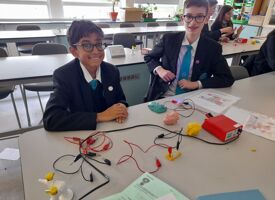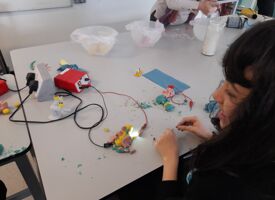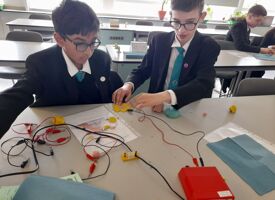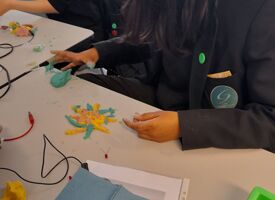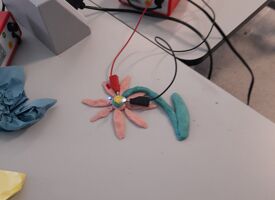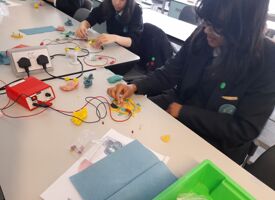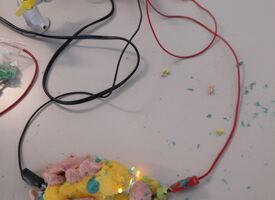Science- Squishy Circuits
Posted on: 09/05/2022Many of us have probably played with playdough at some point in our life. It’s fun, it comes in all sorts of colours and you can make whatever you want. But did you know that with a little work, you can use playdough to conduct electricity? Last Thursday our wonderful KS3 physicists investigated which type of dough was able to conduct electricity. To do this, they used wires to connect the dough to the power supply. They then inserted an LED light bulb into the dough and turned on the power supply. Next, they replaced the light bulb with a buzzer and checked if it worked. After working out which dough could conduct electricity, students used their creativity to make sculptures with the dough and then added them to the circuit.
Curious about the science behind all this? Well, it turns out that the conductive dough consisted of salt, cream of tartar and tap water. When salt and cream of tartar mix with other substances, they break apart into ions (charged particles). These ions, mixed into the dough, allow the electricity to flow through. The tap water also has ions in it. The insulating dough, on the other hand, consisted of sugar, flour and distilled water. All three ingredients do not contain ions and thus cannot conduct electricity.
This activity was a playful way to explore the basic principles of electric circuits. They will be looking at this in more detail in GCSE physics
